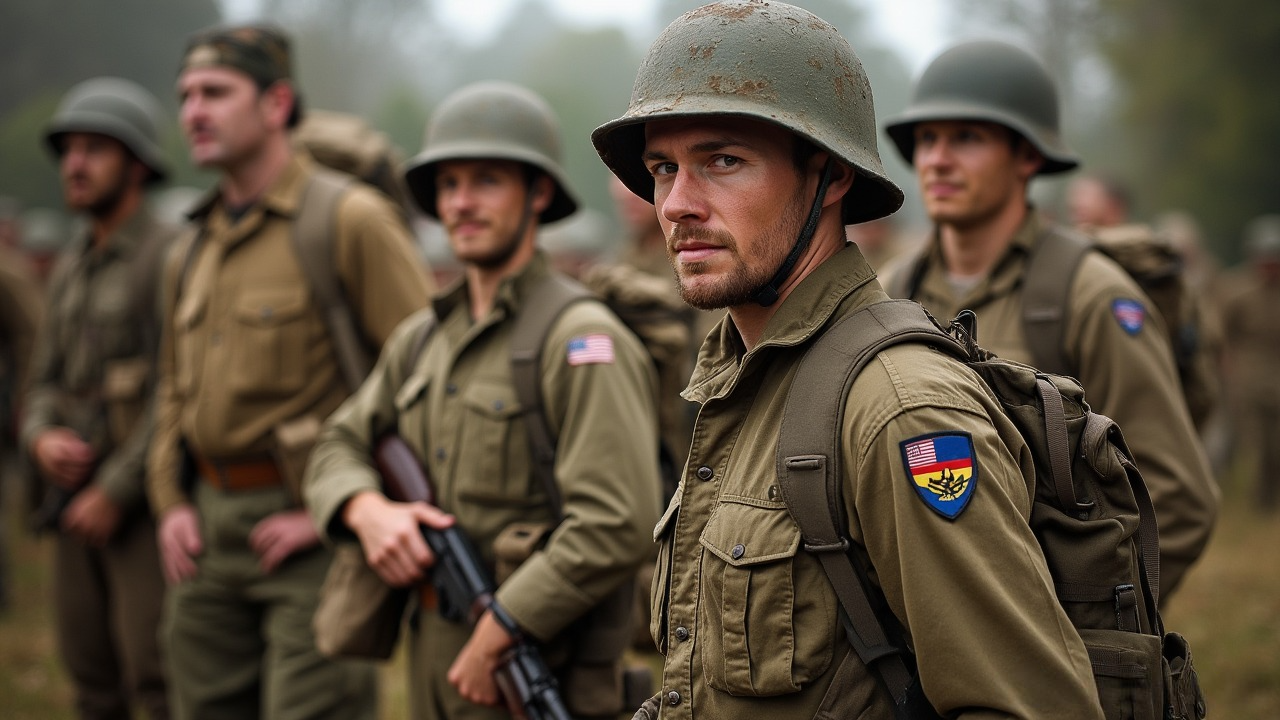
A Complete Guide to WWI US AEF Uniforms and Gear for History Enthusiasts
Published on Nov 16, 2024
When it comes to collecting or reenacting, few eras hold as much intrigue as the First World War. The WWI US AEF uniforms and the accompanying American Expeditionary Force gear offer a unique glimpse into the lives of the brave men who served in the trenches and beyond. Known as the "Doughboys," these soldiers had distinct uniforms and field gear that combined practicality with historical significance.
Key Elements of WWI US AEF Uniforms
The WWI US Army uniforms worn by the American Expeditionary Force (AEF) in Europe were designed with functionality in mind, while also reflecting military tradition. Here are some crucial aspects that defined these uniforms:
1. The Wool Tunic and Breeches
- The standard US Army World War I uniforms featured a wool tunic, often in olive drab or khaki. This durable fabric kept soldiers warm in the frigid European winters.
- The tunic had four pockets and was paired with wool breeches, which tapered to fit neatly into puttees or high-laced boots.
2. Headgear: The Doughboy Helmet and Campaign Hat
- The M1917 helmet, colloquially known as the "Doughboy helmet," became iconic among US forces. This steel helmet provided protection from shrapnel and debris.
- Before the M1917 helmet, soldiers often wore the M1911 campaign hat, a felt hat with a broad brim. Though stylish, it was eventually phased out on the front lines due to limited protection.
3. Puttees and Boots
- Doughboys wrapped their lower legs with puttees, a long strip of cloth wound tightly to protect from mud and cold. Over time, hobnailed boots became standard for rough terrain.
- The rugged footwear and leg wrappings are still sought-after items for WWI reenactment equipment enthusiasts.
Essential American Expeditionary Force Gear
Besides uniforms, the American Expeditionary Force gear was critical in ensuring survival and effectiveness on the battlefield. Collectors and reenactors are often fascinated by these essential pieces:
1. Field Gear and Webbing
- The US military adopted the M1910 equipment, a versatile webbing system designed for soldiers to carry their gear efficiently. This included a belt, suspenders, and haversack.
- Each piece of US WWI field gear was meticulously crafted to be lightweight yet durable, with designs that influenced military gear in later conflicts.
2. Gas Masks and Respirators
- The use of chemical warfare in WWI made gas masks essential. The US AEF carried a variety of masks, including the British-made Small Box Respirator.
- These masks, often cumbersome and uncomfortable, were life-saving devices that exemplified the harsh realities of trench warfare.
3. Haversacks and Backpacks
- Soldiers carried everything they needed in haversacks, which had compartments for rations, personal items, and extra ammunition.
- These haversacks remain a key interest for those studying or recreating authentic WWI US gear, with detailed replicas available for collectors.
Collecting WWI US Military Collectibles
The world of WWI US military collectibles is diverse, ranging from original Doughboy uniforms to preserved field gear. For anyone looking to start or expand their collection, understanding the history behind each piece is crucial.
1. Original vs. Reproduction
- Collectors often face the dilemma of choosing between authentic uniforms and reproduction gear. While originals have unmatched historical value, they can be costly and delicate.
- High-quality reproductions are a practical choice for WWI reenactment equipment, offering durability and the chance to engage in historical events without fear of damaging a valuable artifact.
2. Caring for Your Collection
- Preserving WWI US AEF uniforms requires careful maintenance. Wool uniforms should be stored in climate-controlled environments, away from direct sunlight to prevent fading.
- Metal components, such as helmet liners and buttons, should be cleaned gently to avoid corrosion. Proper care ensures that these relics last for future generations to admire.
Popular Uses of Reenactment Gear Today
The surge in popularity of WWI reenactments and living history events has driven interest in US WWI field gear. Reenactors strive for authenticity, using detailed replicas to portray the soldiers' experiences accurately.
1. Living History Events
- Reenactments provide a vivid way to honor and educate about the sacrifices made by the Doughboys. Participants often don full Doughboy uniforms and march in formations reminiscent of the original AEF.
- These events can include trench setups, mock battles, and immersive experiences that bring the past to life for spectators.
2. Educational Outreach
- Museums and history groups use WWI US military collectibles as part of educational displays. This hands-on approach helps people of all ages connect with the stories of World War I soldiers.
Conclusion
The legacy of WWI US AEF uniforms and the American Expeditionary Force gear remains a fascinating topic for collectors, historians, and reenactors. From the iconic Doughboy helmet to the sturdy wool uniforms, every item tells a story of bravery, endurance, and the evolution of military equipment.
Whether you're a seasoned collector or new to the world of WWI reenactment equipment, appreciating the craftsmanship and history behind these items is essential. As the centennial of World War I has passed, preserving and understanding this history ensures that the sacrifices of the American Expeditionary Force will never be forgotten.
